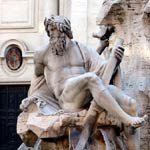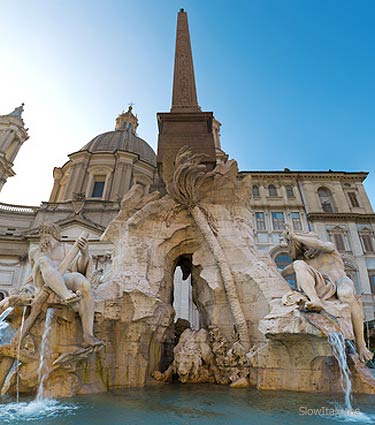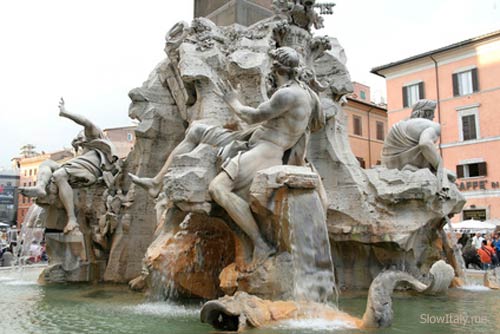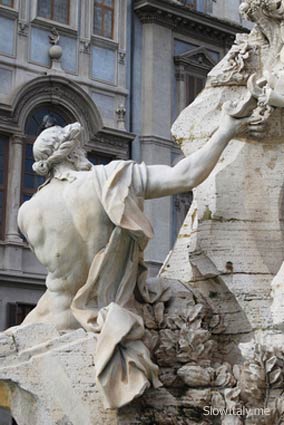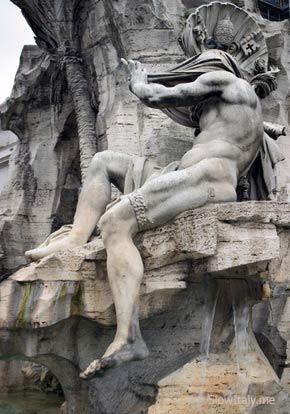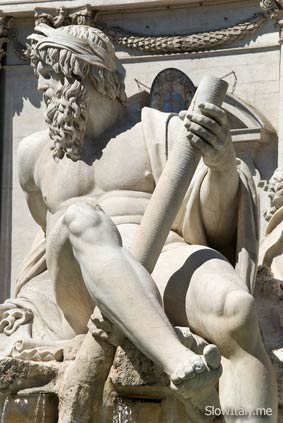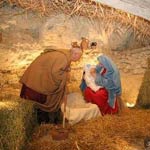The Four River Gods of Piazza Navona
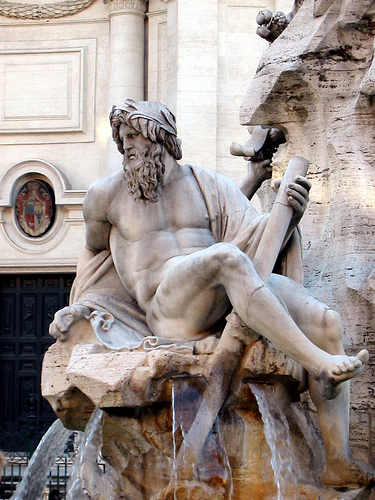
The four river Gods are the protagonists of the Fountain of the Four Rivers (Fontana dei Quattro Fiumi) by Bernini in Piazza Navona, Rome.
The fountain was commissioned in 1651 by Pope Innocent X, whose family palace, the Palazzo Pamphili, faced onto the piazza.
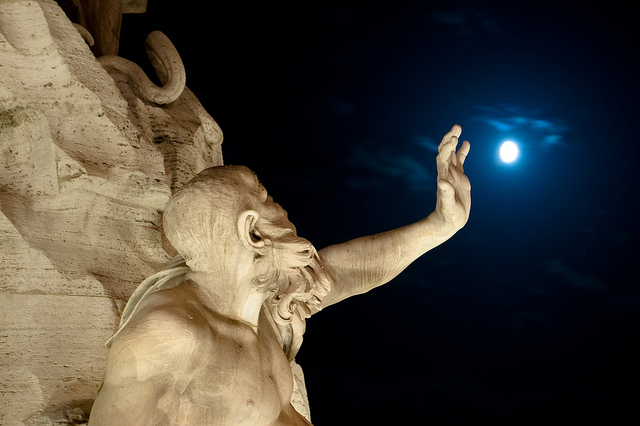
The four rivers represent the four continents then known: the Danube (Europe), the Rio de la Plata (the Americas), the Nile (Africa) and the Ganges (Asia). To complete the four allegorical characters, Bernini sought the help of several sculptors: Claude Poussin for the Ganges, Giacomo Antonio Fancelli for the Nile, Antonio Raggi il Lombardo for the Danube and Francesco Baratta for the Rio della Plata.
The five classical elements are represented, as well: water, by the two large fish, earth, by the great mass of rocks and the fauna and flora, air, that moves the palm tree and fire in the rays of the sun, symbolized by the obelisk.
The Danube, symbolizing Europe, is represented by a figure with this hear tied back, turned towards a horse, with a huge fish beneath him. Why Bernini chose the Danube over the Tiber to represent Europe and the center of Catholicism remains a mystery.
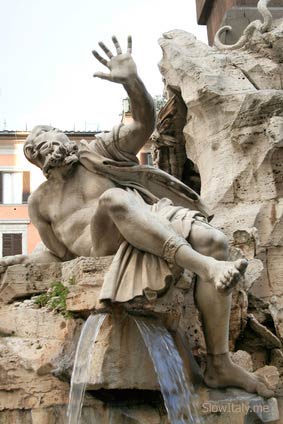 The Rio de la Plata (silver river), holding his arm up, symbolizes submission, due to the fact that the American continent had been recently colonized. It seems as if he is blinded by the light emanating from the central obelisk, which represents the supremacy of Christianity over the four parts of the world. Atop the obelisk is a bronze dove and olive-branch, the emblem of the Pamphili family (the Pope’s family) and symbolic of the civic generosity of the Church, as the fountains were often the only source of water. The pile of coins beside the Rio de la Plata is a reference to the riches of the New World. The word plata means ‘silver’, but also ‘money’ in South-American spanish.
The Rio de la Plata (silver river), holding his arm up, symbolizes submission, due to the fact that the American continent had been recently colonized. It seems as if he is blinded by the light emanating from the central obelisk, which represents the supremacy of Christianity over the four parts of the world. Atop the obelisk is a bronze dove and olive-branch, the emblem of the Pamphili family (the Pope’s family) and symbolic of the civic generosity of the Church, as the fountains were often the only source of water. The pile of coins beside the Rio de la Plata is a reference to the riches of the New World. The word plata means ‘silver’, but also ‘money’ in South-American spanish.
The face of the Nile is veiled, as its source was still unknown at those times. The lion and the palm tree represent the African continent.
The Ganges, cradle of very ancient civilizations is personified by a bearded figure, holding an oar, sitting is an austere position with an elephant beneath him.
Legend has it that Bernini had drawn two of the fountain’s river Gods to mock his eternal rival, Borromini; the Rio de la Plata, facing the church, raises his hand as if protecting himself from the building, likely to fall. The Nile would conceal its head with a veil not to see Borromini’s ‘horrible work’.
Photo credits: Ganges by MAMJODH; Rio de la Plata by Geomangio.

